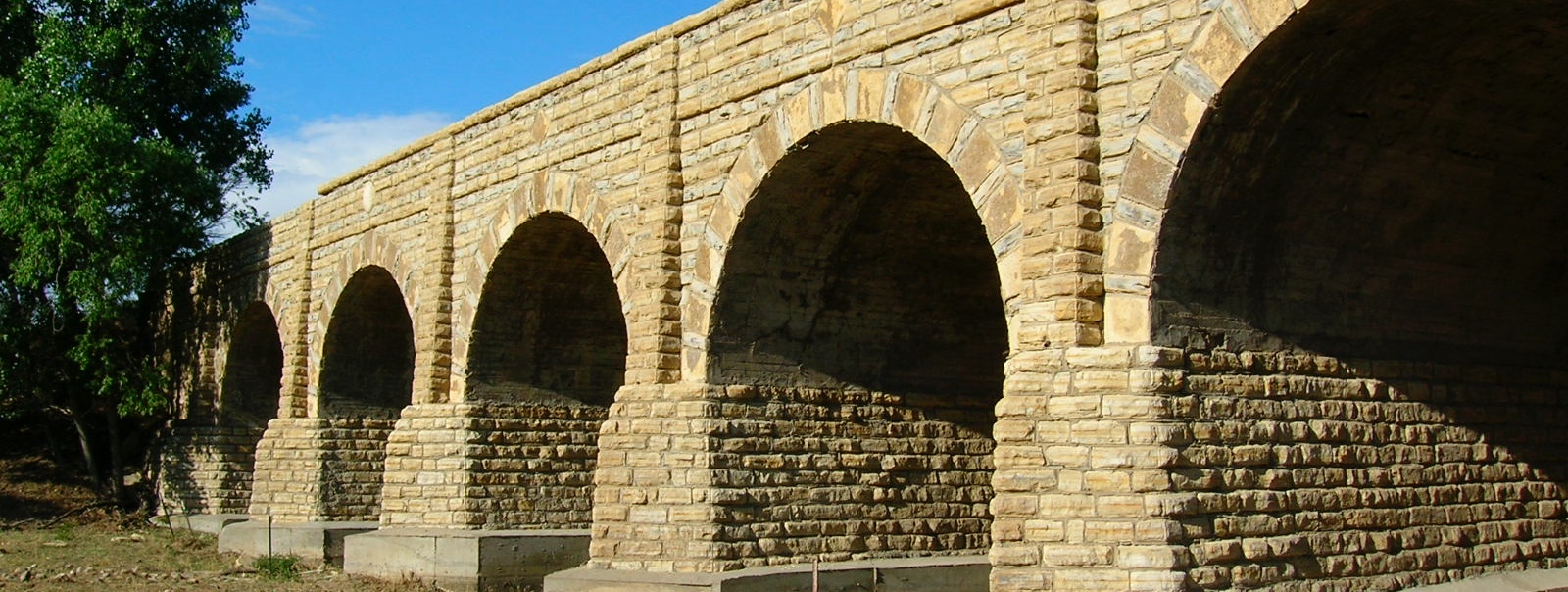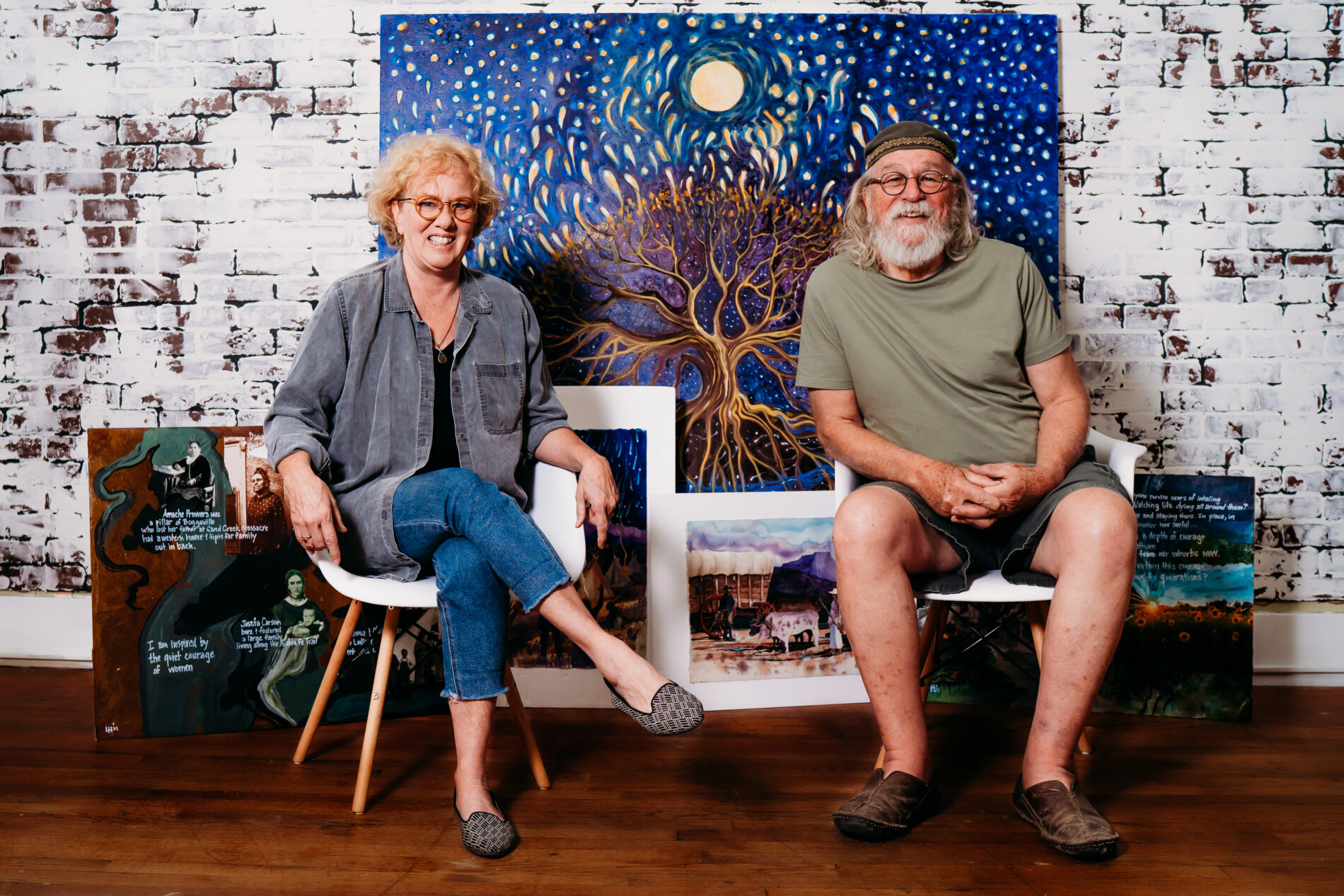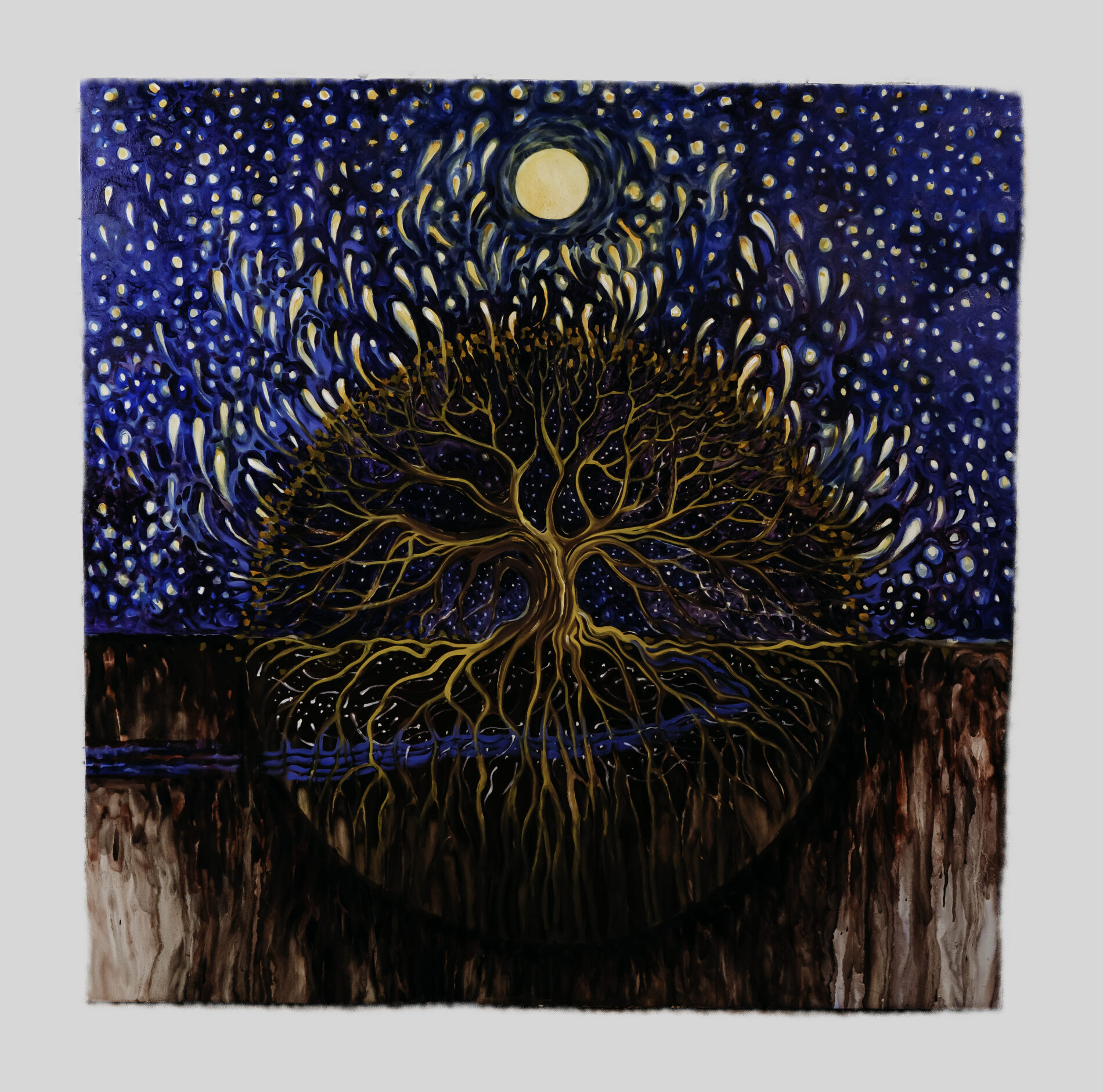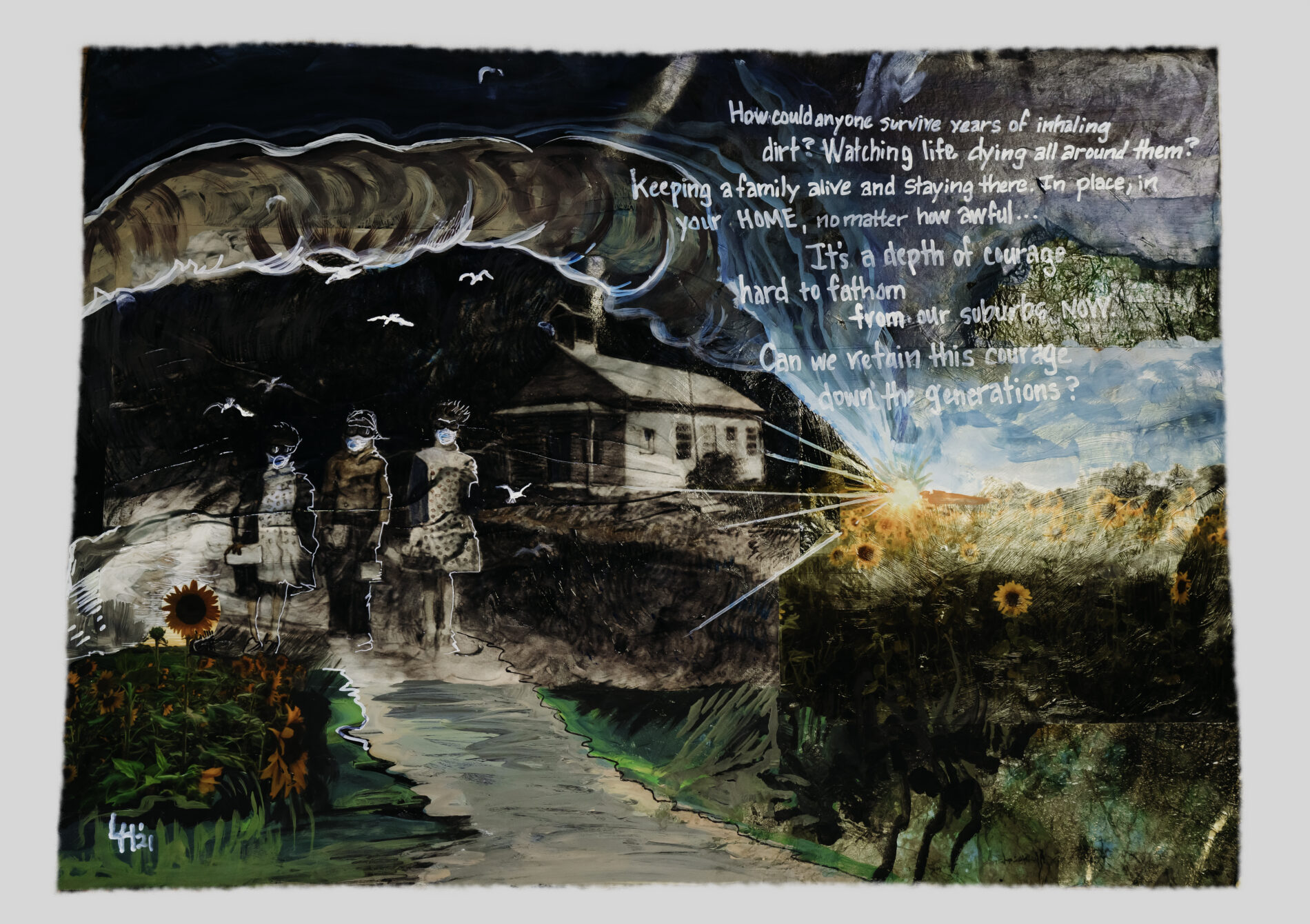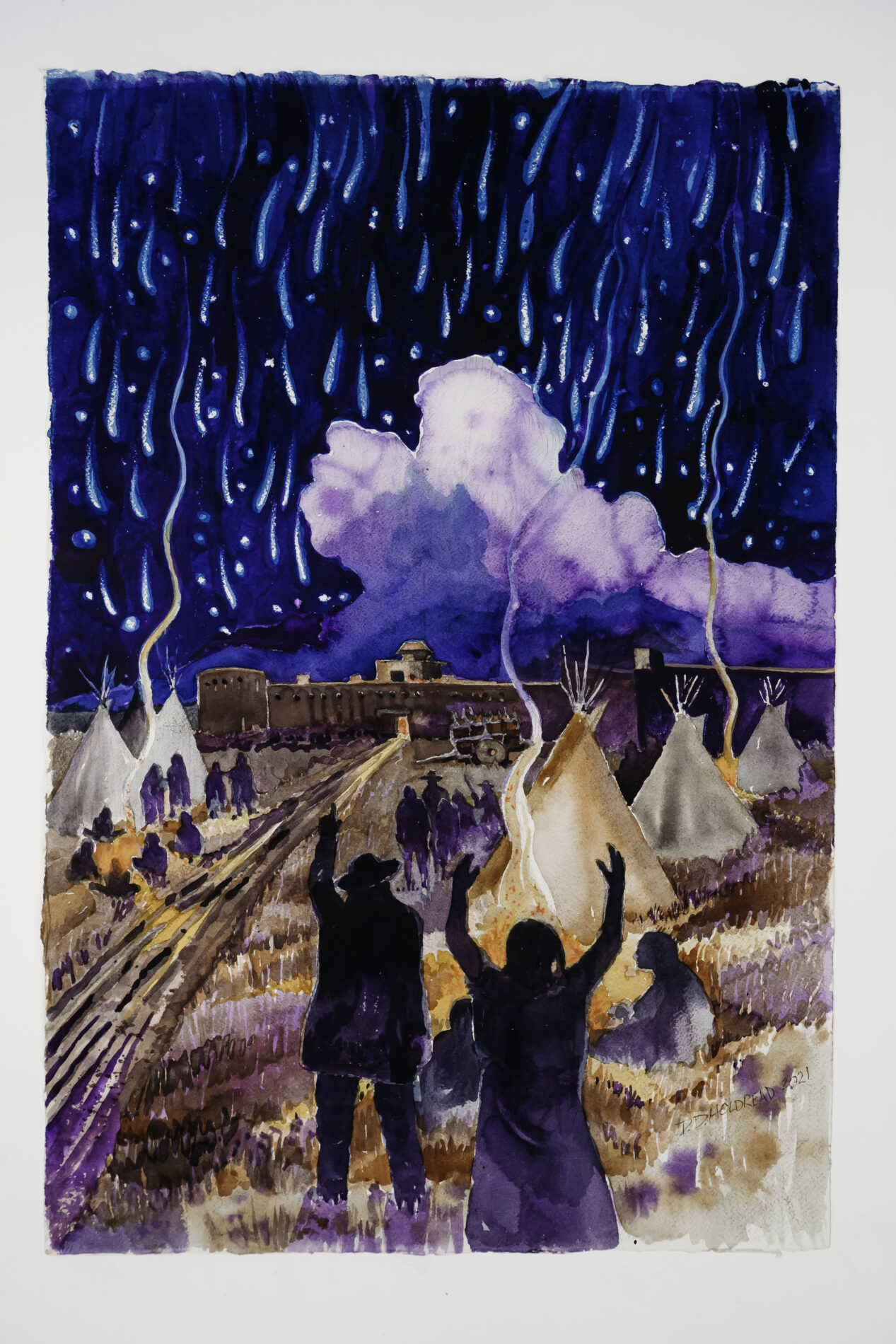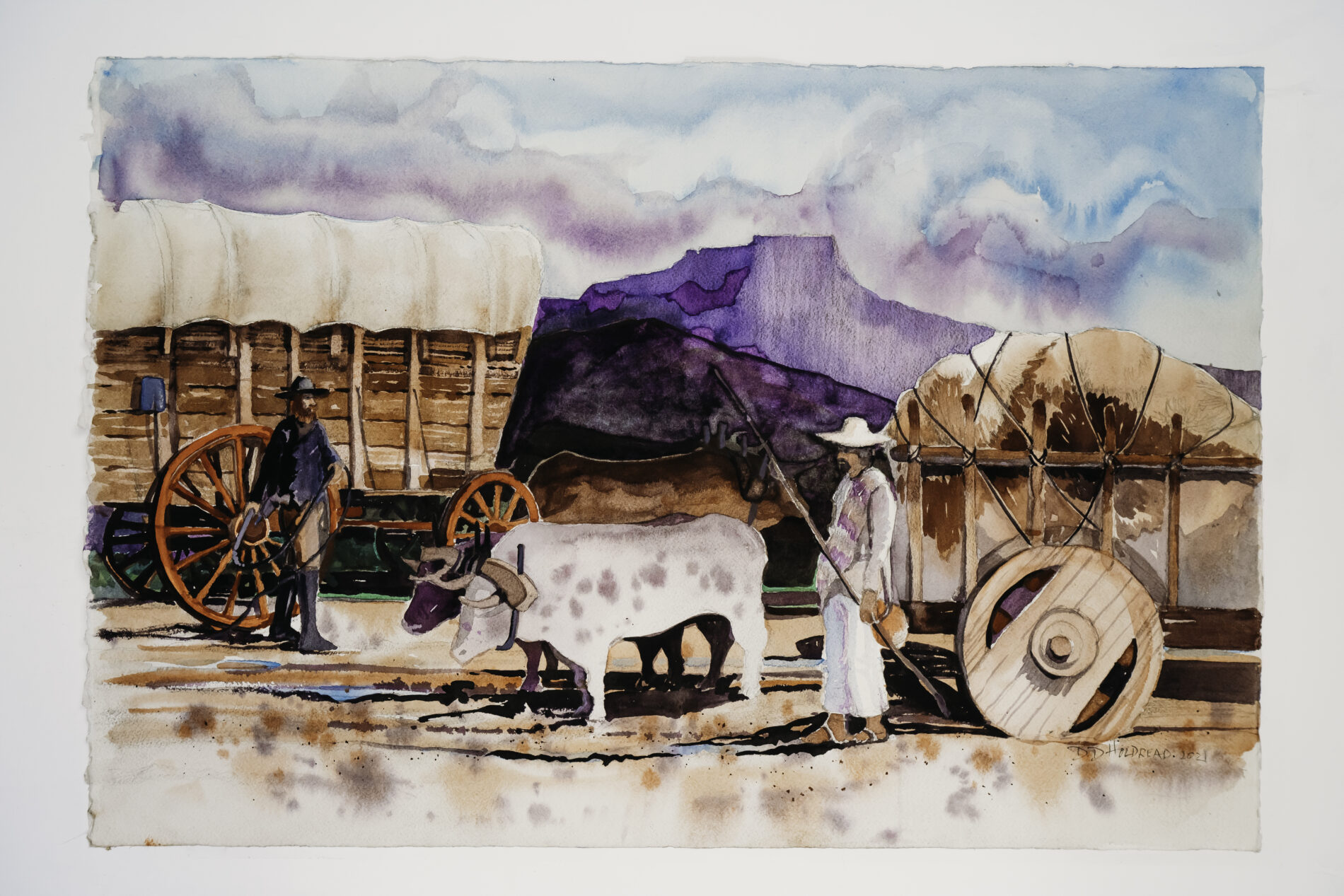Introduction to Life Chronicles
The Canyons and Plains region has been witness to some of the most transformational periods of American history. From Native American beginnings, westward expansion, displacement, wars, environmental disasters, and even World War II incarceration camps, there has never been a better time to reexamine our past and listen for lessons that can aid us in navigating our future.
Two local artists, Doug and Lori Holdread of Trinidad, were invited to create a series of artworks related to the region’s history. Inspired by their experience within the area, they created these five pieces of art that highlight the stories of the Santa Fe Trail, Bent’s Old Fort, the Sand Creek Massacre, and the Dust Bowl. Through the Life Chronicles program their newest commissions, presented here, will examine pivotal moments from the region’s past and uncover messages that give us inspiration and hope, decades and centuries later.
SAND CREEK MASSACRE
The Birth of Stars
Fueled by the expansionists’ hunger for arable lands and the riches of newly discovered gold, the people of the Cheyenne and Arapaho tribes were being forced onto smaller reservations than they were initially promised through the Treaty of Fort Laramie. Aiming to find protections for his land and people, Mo’ohtavetoo’o (Black Kettle), a Cheyenne chief, sought aid and alliances with the U.S. government. However, a visit in 1863 with Abraham Lincoln secured only the token gift of an American flag. In November 1864, Black Kettle was encamped in a village on Sand Creek in Southeast Colorado when U.S. Army soldiers attacked the Cheyenne and Arapaho, resulting in the deaths of more than 200 Native Americans. Artists Doug and Lori Holdread were moved by this tragic event while being inspired by the strong beliefs and hope of the Cheyenne and Arapaho people.
The Birth of Stars tells the story of how “stars wandered in darkness, within the Earth, until they were attracted by the cottonwood trees. The stars traveled up through the roots and branches of the tree and burst forth from the terminal buds to take their places in the heavens.” This painting provides a powerful representation of the Sand Creek Massacre’s enduring legacy — that from devastation comes rebirth and inspiration for peace.
DUST BOWL
Into the Light
The Dust Bowl was a man-made disaster in the early 1930s that resulted from poor farming techniques that impacted Texas, Oklahoma, New Mexico, Colorado, and Kansas. Documented as the worst environmental catastrophe in U.S. history, the event led to inhospitable living conditions throughout the American Southwest and forced thousands of farming families to relocate to California.
The stoic, hopeful, and playful nature of children is often revealed during times of challenge and crisis. The stories of children raised during the Dust Bowl inspired Into the Light and underscore the importance of hope and a vision of the future when facing difficult times.
Into the Light captures a child’s ability to find creative coping mechanisms, and draws upon contemporary parallels of the COVID-19 pandemic. Children are seen wearing face masks for protection as they struggle to find normalcy in a rapidly changing world.
In response to the Dust Bowl, New Deal programs for greener farming practices were established by transitioning the abandoned farmland into the Comanche National Grassland, which now helps prevent the soil from eroding and creates a new home for an abundance of wildlife. As the earth’s climate continues to change, lessons learned from the Dust Bowl are poignantly relative to modern-day life.
BENT’S OLD FORT
The Night the Stars Fell
The lure of fur trapping drew brothers William and Charles Bent to the American West. Their arrival in the late 1820s coincided with the establishment of the Santa Fe Trail — a route that enabled global trade between the U.S., Mexico, and the world. Seeing an economic opportunity, William and Charles built the original adobe Bent’s Fort in 1833 to trade with Native Americans and trappers.
The fort symbolized inclusivity and was known far and wide for welcoming diverse cultures and bringing people peacefully together to build trade relationships and cross-collaboration.
The Night the Stars Fell represents an exceptionally catalyzing event in the Fort’s history. It captures a moment in November 1833, around the time of the completion of the Fort, when the Leonid Meteor Showers produced a massive meteor storm that lit up the sky with what looked like falling stars. Without an understanding of modern astronomy, this event was met by some with fear, but by others as a symbol of new beginnings.
SANTA FE TRAIL
Exchanging News on the Trail
Established in the early 1820s, the Santa Fe Trail connected the United States westward into Mexico and expanded both young countries’ economic activity around the world. Spanning nearly 900 miles from Missouri to Mexico, the Santa Fe Trail served as an early commercial highway for a diversity of people that included Mexican and North American traders, travelers seeking adventure and gold in California and Colorado, missionaries, entrepreneurs, and immigrants. The international goods transported and traded along the Trail included spices, tea, foodstuffs, cloth, silver, and mules. Ultimately, this led to a vibrant exchange and awakening of global awareness and cultural understanding.
As seen in Exchanging News on the Trail, a Missouri trader meets with a Mexican trader near Fisher’s Peak in Trinidad, Colorado. The Trail provided a route across the plains and mountains for delivering news and information, as well as creating cultural connections between its traders, travelers, and residents along the way.
COMMUNITY STORY
Quiet Voices
Quiet Voices is a contemporary depiction of lesser-known stories, particularly the influential women of the Canyons & Plains region. These steadfast heroes of history held families together, influenced the establishment of communities, and fostered hope for the future.
According to artist Lori Holdread: “While their quiet courage did not bring about fame or fortune, their stories still inspire the lives of all those who came after them.” These strong women fueled early commerce, welcomed travelers along the Santa Fe Trail and instilled in their children a vision of what was possible. Among them were Amache Prowers, a pillar of Boggsville who lost her father in the Sand Creek Massacre, Cathay Williams who disguised herself as a male and became a buffalo soldier, and Royal Red St. Vrain-Bransford, daughter of Chief Red Cloud, who waited for a husband who never came home.
Additional defining historical events of the Canyons & Plains region in the early 1900s are represented, such as the Ludlow Massacre of 1914. Coal miners and their families were evicted from company housing during a labor strike and moved into the Ludlow Tent Colony. That colony was later attacked by the Colorado National Guard and private security agents, resulting in the deaths of 19, including 11 children.
These stories reflect the people who, through their adversity, persevered and helped define the colorful history of the region.

